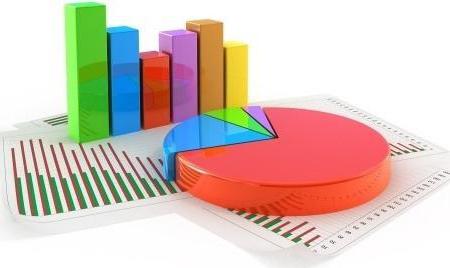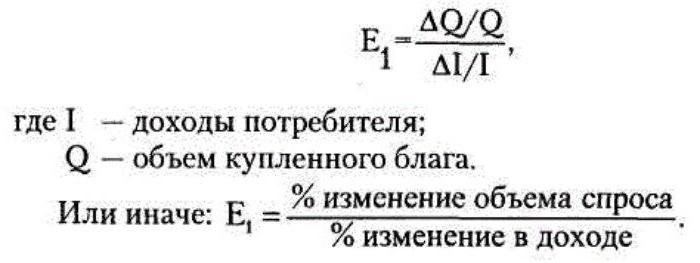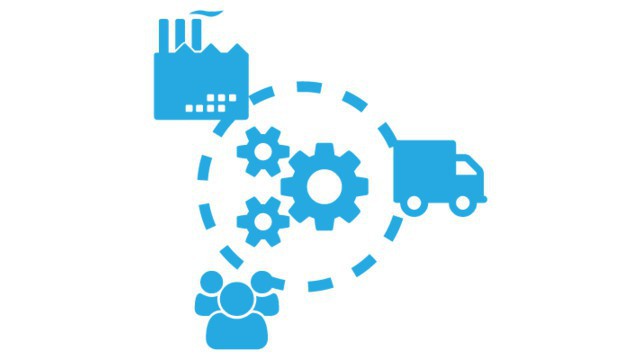Consumer, or, as it is also called, consumer demand is a manifestation of people's needs for certain goods. In the commodity market, the issue of demand is seen as a system of relations between those who sell the goods and those who are willing to purchase them. It is worth noting that consumer demand is the main component of the market mechanism, along with price and supply.
This article will discuss the main types of demand, the factors affecting demand, basic methods will be described using which, in an exact way, it is possible to assess and forecast consumer demand in the market.
Certain forms of relations are manifested in the qualitative and quantitative relations of market elements. The impact of these elements forms the necessary proportions of the production of goods and their consumption.

In the ratio of consumer demand and consumer supply form and determine the final price of the goods. Demand for goods is an important element of the market, since on the basis of it the need for people in goods and services is revealed.
Demand is expressed in monetary form, as well as in the willingness of people to buy products at a certain existing price. The volume of consumer demand is characterized by the willingness of people to buy one or another product at a realizable price for a specific time period.
Demand environment
When studying demand, it is important to consider the environment in which market processes occur. Consumer demand in the market can be carried out in an open, closed, competitive and regulated environment.
In an open environment, manufacturers freely enter and enter the trading market. In an open environment, commercial activities are carried out without obstacles for any manufacturer.
In a closed environment, the activities of manufacturers are determined by a number of regulations (licensing, quotas, customs barriers), which often becomes an obstacle for new manufacturers to enter the market.
In a competitive environment, there is free competition between small and medium-sized producers. These conditions allow maintaining the right balance of consumer demand and supply. It is worth noting that this environment is the most optimal and favorable for the activities of commercial enterprises.
To regulate the environment by the state, tight control of the purchase and sale system is carried out, in which all the activities of enterprises are determined by the regulations.
Types of degree of satisfaction of demand
There are degrees that determine the level of consumer demand.
Real demand is an indicator of the size of the goods sold for a certain time, expressed in cost or in kind terms.
Realized or satisfied demand is determined by the main part of solvent demand.
Unsatisfied consumer demand is the presentation of demand for marketable products that are not satisfied for any reason (product price is too high, product shortage, quality does not match price). Such demand may be:
- hidden, manifests itself when a person buys a product that does not fully replace a missing product;
- explicit, due to the fact that a person can not acquire the right thing for any subjective or objective reasons;
- deferred, causes a person to postpone a purchase for some reason.

Types of demand by frequency
Everyday is the demand that is presented every day.It can be food and hygiene products.
Periodic - demand that arises in people after some period of time. It can be clothes or shoes.
Occasional is a demand that arises extremely rarely. It can be any delicacies or jewelry.
Demand characterized by customer intentions
The intentions of customers form the demand for various products. Consumer demand cannot but exist, but it can be expressed in different ways. Depending on the intentions, these types of demand are distinguished:
- steady (hard, conservative);
- alternative (compromise);
- impulsive (spontaneous).

The dependence of demand on price
Elastic and inelastic demand can be distinguished. These forms form either individually or in aggregate market conditions.
Elastic demand - a changing consumer demand, due to changes in product prices or customer income.
Inelastic demand - unchanging demand. Inelastic demand includes a group of goods that are included in the consumer basket.
Demand formation
The formation of demand occurs under the influence of various factors, such as:
- economic;
- demographic
- social;
- natural;
- political.
Change in demand
Changes in consumer demand can be caused not only by the influence of the price of a particular product, but also by a number of factors such as:
- change in population income;
- price fluctuation for a substitute product;
- change of preferences;
- changes in the political course in the field of economics.
Demand Estimation Technique
For any manufacturer, it is very important to study consumer demand before releasing products or to evaluate the effectiveness of activities. Manufactures, their managers, seek to obtain accurate data using the following series of demand assessment methods.

There are a number of the most accurate methods for assessing consumer demand:
- extrapolation method for estimating demand;
- consumption level method;
- lead indicator method.
Extrapolation method for estimating demand
This method is based on extrapolation of indicators for the past time period and consists in establishing trends and their parameters. The use of this method necessarily includes an assessment of past performance for at least five years, and provided that during this time there were no abnormal fluctuations. If the demand forecast will be carried out on data of a shorter period, the calculations will not be accurate.
Consumption level method
This method of estimating demand is acceptable when it comes to direct consumption of goods, it is based on data from standard coefficients. For example, consumer demand for cars or equipment can be calculated by identifying the amount of this product per 1,000 people in general or in a specific group of people with a certain income. With the already known total demand volumes, the actual quantity of goods is subtracted from the total demand; as a result, there is data on new consumer demand. When making a forecast, the needs for updating cars can be taken into account.
An important factor that determines the level of consumption of these goods is the income of consumers, which has a significant impact on the allocation of funds from the family budget for the purchase of a product. The level of income is a key factor affecting the intensity of consumption of different goods.
This method also takes into account the study of the elasticity of demand by price and income. The magnitude of the change in demand, due to different income levels of the population, differs not only in specific products, but also in groups of buyers with different income levels, as well as in regions of the state.
When it is possible to determine the difference in per capita income in specific groups, then the analysis should be extensive and not limited only to the average indicator per person in the total economy of the state. Research should be carried out on groups depending on professions, geographical and socio-economic situation.
If the fluctuations are insignificant, the income elasticity coefficient should be used.Thus, if it is revealed that with a one percent increase in the state’s income, there is a two percent increase in the consumption of a product, then the demand for this product in the next years will be estimated by the income elasticity coefficient.
This ratio is determined by the formula below.
End use method
This method is determined by the consumption coefficient and is used to identify demand for manufactured goods. Its essence lies in determining options for the consumption of a particular product and establishing a specific coefficient. If you know the development plans for certain areas and industries, you can find the need for a particular product by multiplying the volume of production by a given coefficient that corresponds to the level of consumption of the product.
Leading Indicator Method
This method is applicable when there is a certain (identified) pattern that expresses a quantitative or temporal dependence on the consumption of goods. If the manufacturer knows that the demand for electrical equipment depends on a certain scale and time of commissioning of production, residential and office premises, then the demand for these goods and the time of its manifestation can be determined with great accuracy if information on civil construction plans is known.

Along with the above methods, there are also:
- selective method;
- questioning;
- economic and mathematical method.
A comparative evaluation of these methods proves that, due to a number of shortcomings, they are not so effective, but can be applied, as experts in the field of economic statistics note, only under certain conditions. For example, the sampling method is very simple and fairly accurate, but provided that the assessment is based on reliable data. Questioning is possible only then the group of respondents is very insignificant. The economic and mathematical method, even if it does not require large-scale calculations, but its specificity lies only in calculating the norms of consumption of goods and the norms of providing the population.